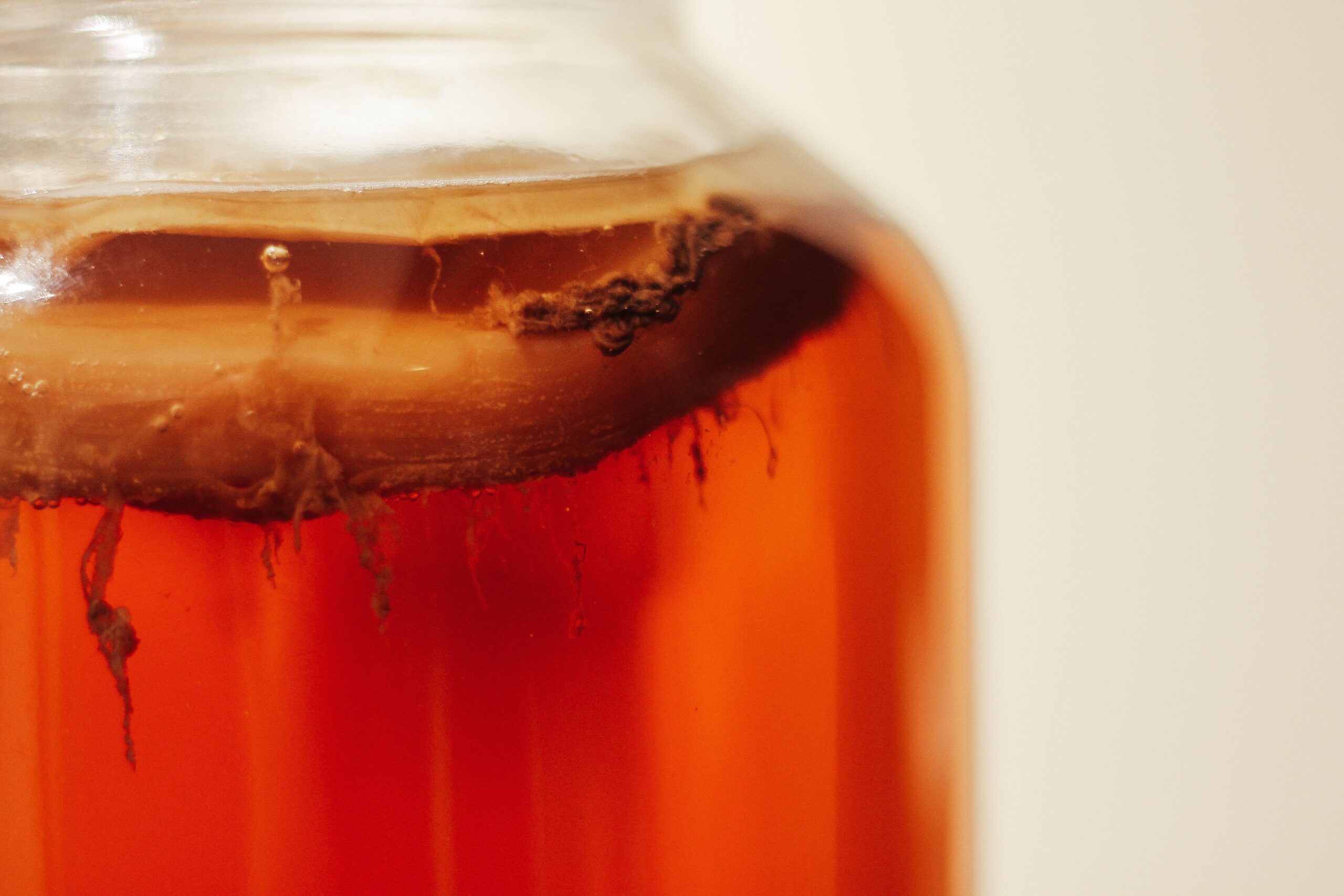Your cart is currently empty!
Exploring Kombucha Leather: An Eco-Friendly Alternative

Let us dive into the the fascinating world of kombucha leather, an earth-friendly alternative to animal leather that is revolutionizing the fashion industry. Made from a unique blend of bacteria, yeast, and tea, this innovative material offers a sustainable and ethical option for conscious consumers.
With its versatile properties and luxurious feel, kombucha leather is not only a powerful symbol of sustainability but also a testament to human creativity. In this blog, we will delve deeper into the incredible journey of kombucha leather, uncovering its endless possibilities and shedding light on its potential to transform the way we think about fashion. But we will also investigate the current limitations.
Table of Contents
What is Kombucha Leather?
Also known as microbial cellulose, or sometimes referred to as scoby leather, it is a remarkable material that is made through the fermentation of tea or fruit juice by a symbiotic culture of bacteria and yeast known as a SCOBY. This unique process creates a strong and durable material that rivals traditional leather but without the environmental impact.
The Environmental Benefits
In a world where sustainability is becoming an increasingly important focus, it’s no wonder that innovative alternatives are gaining popularity. As a unique material it is not only aesthetically appealing but also offers a range of environmental benefits. By utilizing the symbiotic culture of bacteria and yeast, this leather substitute is able to reduce the reliance on traditional animal or synthetic leather production methods.
Without the need for animal rearing or harmful chemical treatments, kombucha leather helps to minimize the ecological footprint associated with traditional leather products. Additionally, the production process for kombucha leather generates significantly less waste and is fully biodegradable, further contributing to its eco-friendly qualities. With its versatility and positive environmental impact, it proves that sustainable alternatives can be stylish and beneficial for the planet.
How to make Kombucha Leather?
Making it at home is easier than you might think. To get started, you’ll need a SCOBY (symbiotic culture of bacteria and yeast), which is the key ingredient that transforms sweetened tea into a durable and pliable material. Simply brew a batch of sweetened tea, and let it cool to room temperature.
Then, introduce the SCOBY into the tea and cover the container with a breathable cloth. Over the course of a week or two, the SCOBY will ferment the tea, creating a thin layer of cellulose that can be peeled off and dried. Once dried, this kombucha leather can be cut and sewn into various products, from bags and wallets to clothing accessories and more.
Not only is making kombucha leather a sustainable and eco-friendly choice, but it also allows you to personalize your creations and reduce waste. To summarize the steps are:
- Brew a batch of sweetened tea, let it cool to room temperature
- Introduce SCOBY into the tea, cover the container with a breathable cloth
- Let fermentation do the work, 1-2 weeks, then peel off and dry the layers
- Cut the dried layers into the desired shapes, create your kombucha leather products
GiY: Bio Buddies made a great video that shows the process.
Challenges and Limitations
While Kombucha leather holds immense potential as a sustainable alternative to traditional leather, it is important to acknowledge the challenges and limitations that come with this innovative material.
- Production time: the process of growing and cultivating is time consuming
- Consistent quality: many factors like temperature, humidity, fermentation conditions and others can lead to very different material
- Limited color options: naturally the color will be light beige or tan. Natural dyes can add some variation, but a wide range, like in traditional leather, is very difficult to achieve
These obstacles, however, should not deter us from pursuing its development. Instead, they serve as invitations to push the boundaries of what is possible. By embracing these challenges, we open doors to creativity and innovation, seeking solutions that will overcome the current limitations.
What can kombucha leather be used for?
Because of it’s biological base from yeast and bacteria the life span is still relatively short compared to traditional leather. Costumes, clothing, shoes, wallets are all potential projects, while using it as sofa cover is not yet feasible.
Final Words
Although being a unique and promising material, we should continue exploring and invest in eco-friendly alternatives to traditional clothing materials. Sustainable innovations are the path for future generations.
In our article about non toxic clothing you can learn how to find further alternatives to the usual clothing production processes. And if you are looking to extend the lifespan of your wardrobe, check our guide on durable fabrics.
By
Posted in
